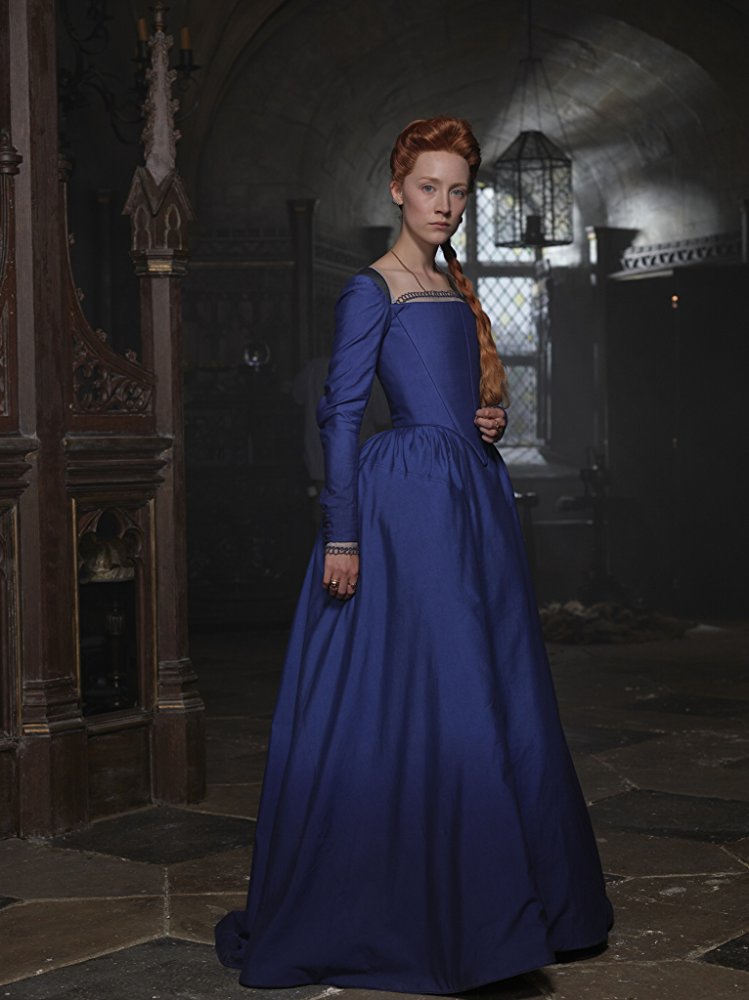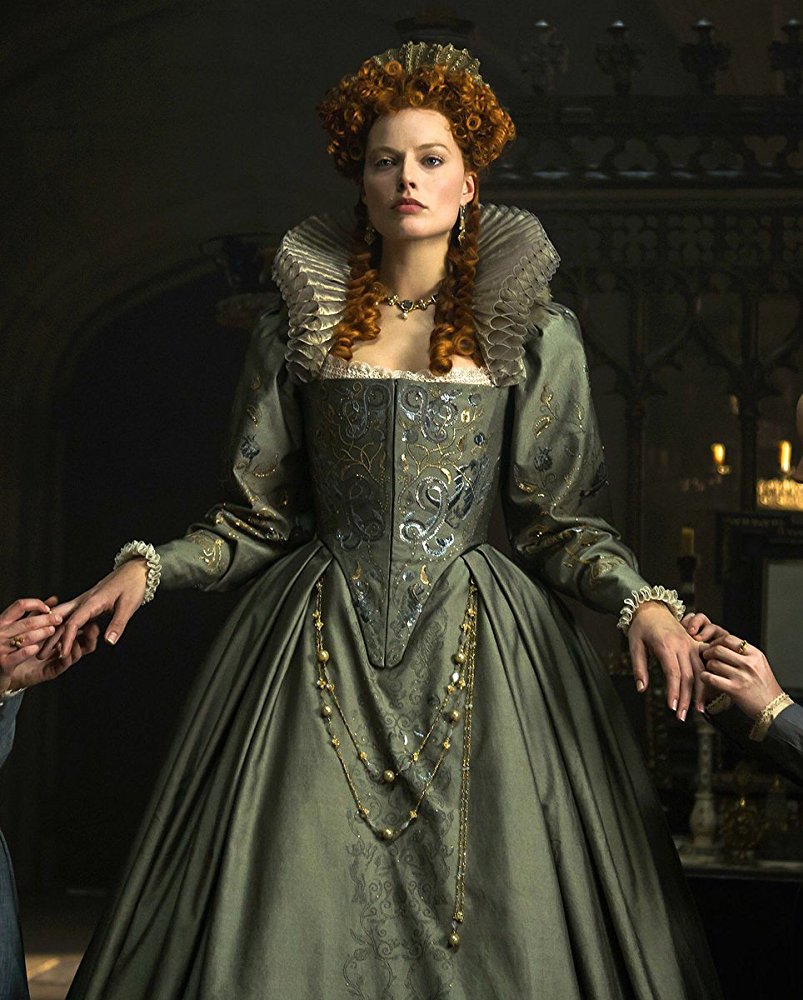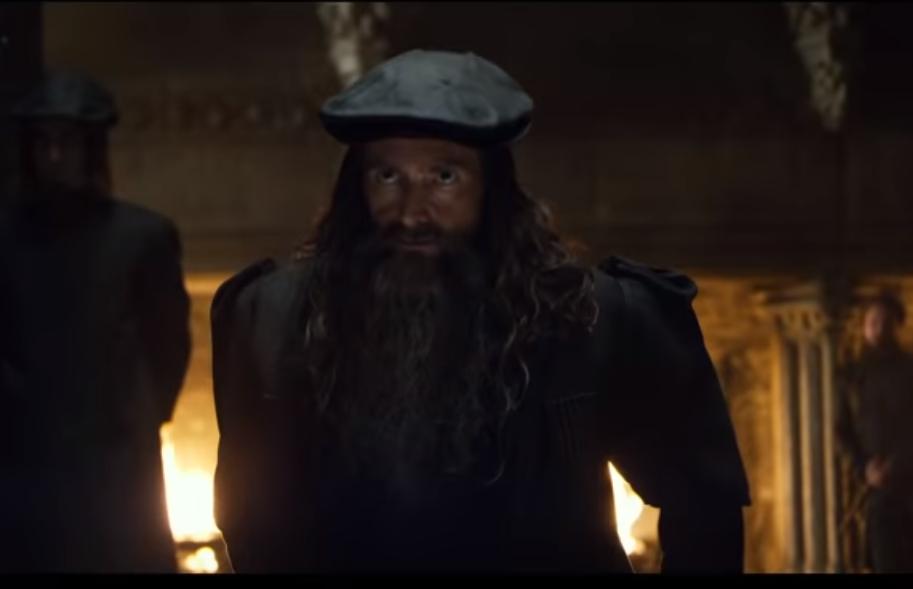Sumptuous in both visual and historical texture and context, while delivering a telling character study of Mary Queen of Scots and Elizabeth I that is even more powerful thanks to strong award-caliber performances by Saoirse Ronan and Margot Robbie, respectively, MARY QUEEN OF SCOTS is glorious and epic in its scope while captivating with intricate emotional nuances of each woman.

Making her feature film directorial debut, Josie Rourke brings a wealth of theatre expertise to her vision for MARY QUEEN OF SCOTS. Shooting on location (including helicopter shots of the Scottish coast) and allowing several weeks for rehearsal, Rourke oversaw a large principal cast plus more than 200 extras in bringing this story to life, including two full royal courts, bloody battle sequence complete with horses and armament, rabble-rousing religious fanaticism, while embracing historical accuracy for the bulk of the film. Using the manners and methods of Mary’s Scottish court which looked akin to something more Arthurian and of a circular nature, versus that of Elizabeth with a hard line, head of the table and everyone lined up like little soldiers, Rourke’s visual approach subtly reminds of the differences between the two women and their way of governing. Had it not been for the 2010 discovery of a letter written by Elizabeth I which historian John Guy brought to light in “Queen of Scots: The True Life of Mary Stuart”, there might not have been a need to tell the story of these two regal forces of nature. But with a new perspective on their relationship, history was ripe for the retelling, something which Rourke embraced as a director. Calling on her theatre work, Rourke relied heavily on physical language through performance choreography as a means of visually telling this story. Costume, hair and make-up, and production design are also all integral parts of Rourke’s tapestry for defining not only the times and their politics but the nature of each woman. And with that groundwork laid, MARY QUEEN OF SCOTS rises and falls on performance. And what performances!

From the start, it’s Saoirse Ronan who is simply killer with her portrayal of Mary, turning in a performance superior to that of Katharine Hepburn in John Ford’s 1936 “Mary of Scotland”. Where Hepburn was all fire and brimstone, Ronan has an internal fire that is perfectly calibrated for a nuanced performance that brings forth power and strength but the joy of life and fun that Mary shares with her gentlewomen. She is giddy as a schoolgirl at times, especially when falling in love with Lord Darnley (who is brilliantly played by Jack Lowden – foppish arrogance laced with idiocy. A hard combination to elicit with any believability, but he does.). But on the other hand, runs the gamut of emotions that result from betrayals, secrets, lies, manipulation, all of which lead to a wonderful emotional subtext of vulnerability that Mary then masks with defiance (e.g., third act between Elizabeth and Mary. From tears to spitfire on the turn of a dime.)

On the other hand, we have Margot Robbie as Elizabeth whose private moments of romance with Robert Dudley as forlornly played by Joe Alwyn who has a “sad puppy dog in his eyes look” for most of the film, descends into cold and calculating internal conflict over being a woman in a man’s world, feeling she is forced to choose between the being a Queen and a wife and mother, until finally Elizabeth is as emotionally stone-hearted as her white make-uped face. Robbie excels at coldness, even in “romantic moments”. While this is the public persona that history documents for Elizabeth I, one would think that there might have actually been more moments of femininity or softness and kindness in private, yet we see only a small glimpse of that when the new foal is born. But what we also see is that softness framed in a widescreen with Elizabeth standing – alone. She has walled herself off from all. And Robbie brings that emotional gravitas to light.
David Tennant is pure evil as John Knox. Espousing religion and the values of being a Protestant, yet he incites hatred and violence in consort with Lord Maitland, Earl of Lennox, Prince James and more. Tennant makes Knox despicable. And thanks to the work of costume designer Alexandra Payne and hair and make-up work of Jenny Shircore and her team, the look of Knox is immediately recognizable in keeping with the many statutes, drawings and paintings over the centuries.

Important to note is that this entire story point of the religious clash and denouncing Catholicism as evil and Protestantism is the only religion while promoting violence and vile behavior and words is beyond timely and topical given the current political administration. It has long been said that history repeats itself and we are seeing 16th century England and Scotland play out in spades in the 21st century.
Martin Compston’s take on Bothwell is fascinating from the film’s opening and Mary’s arrival back in Scotland to the bitter end. There is something untrustworthy that Compston brings about his body language that gives rise of suspicion to Bothwell’s self-proclaimed loyalty to Mary. And as we see play out, and as history has told us, he was not to be trusted. He had his own designs. Compston creates conflict and ambiguity by physical nuance versus dialogue, building suspicion until some revelatory and shocking moments in the third act of the film.
Beau Willimon’s script is intricately constructed. Adapted from the work of noted historian John Guy, Willimon lays the historical foundation of the familial relationship between Mary and Elizabeth, Mary’s marriage to a French King where she lived as Queen until his untimely passing, only to return home to her native Scotland and take her rightful place as it’s Queen. In her absence, her brother has been watching over the land which Elizabeth wants to rule. Mary, on the other hand, wants to be named successor to Elizabeth and rule over all England and Scotland. Adding a notable wrinkle is the notion of an heir. Elizabeth is single and childless. Mary marries again, and to Englishman no less, and produces an heir named James.

With so much at stake in terms of a power struggle between the two women, Willimon keeps all the moving parts bobbing and weaving, intersecting and crossing, and all filled with intrigue, deception, deceit, betrayal. Interesting is that there are very few pure motives of kindness that we see play out, but the ones that we do see come from Mary which is a big key as to why she should have been named Elizabeth’s successor – Mary had a heart and knew when and how to use it but could conversely be tough and strong; a necessary balance for a true leader. Characters are extremely well fleshed out and the history that unfolds is wonderful to see come to life. We are able to see the political clashing unfold and again, very timely, topical and relevant to today. Of note is a climactic scene in the third act between Mary and Elizabeth. History is well documented that the two women never met in person, but with MARY QUEEN OF SCOTS (as we have seen in other tellings of this history), we have a scenario that includes a meeting. However, thanks to beautiful visual design of rows of hanging gauze wafting in a soft wind through a barn, the two women wander between the rows of fabric speaking, but never actually seeing each other. Creative and imaginative in its presentation, and very effective.

Long a favorite cinematographer, John Mathieson delivers a rich, lush tapestry that captures and celebrates the beauty and vastness of Mary’s landscape in Scotland. We not only see, but feel, the expanse of the country and see why she loves the land so while it’s ruggedness and sturdiness serves as a metaphor for Mary herself. But she never feels “small” when in a widescreen aerial shot taken miles away. She still stands out; sitting proudly on her horse, back straight (even visible at that distance). On the flip side, the intimacy and familial nature of Mary’s bedchamber is a perfect counter to that and gives more depth to the range of Mary’s emotions and the joy she has in her life. Camera is lighter, handheld. There’s 360 degree movement and lyricism of the camera that reflects the movement within Mary’s emotions. Lensing in England of Elizabeth, however, is always with perfect framing, hard lines. You feel the coldness and impersonal nature of her world – even when there is a wall of ceiling high windows and light streaming through. Every camera movement with Elizabeth has a feeling of “do not touch” grandeur. A key battle sequence has great fluidity and emotional intensity with some wonderful camera angles – particularly thanks to the staging of Mary on her horse atop a hill looking down on her brother James and the sea of death unfolding. Riveting is how the camera zooms in on her eyes and James’ eyes and editing cuts back and forth as Mary makes the decision to not have Bothwell kill him. That one moment is perhaps the moment when Mary changed her own future. . . A very powerful sequence and all the more so thanks to Mathieson and editor Chris Dickens.

Don’t be surprised to hear the names of Alexandra Byrne and Jenny Shircore announced come Oscar nominations morning. Previously working together on “Elizabeth” and “Elizabeth: The Golden Age”, both which starred Cate Blanchett was the Virgin Queen, this go round, the pair take a completely different approach to costume design, and hair and make-up, respectively, and all to great success.

When it comes to costume, Byrne outdoes herself with originality as she turned to denim for all of the costuming. The gowns on both Ronan and Robbie are all made of denim of various weights and dyed colors, and thanks to the various gauges of the fabric gives the appearance of gorgeous moire silks. Byrne creates a beautiful contract between the cleaner lines and bold colors of blues, teals and bronze on Ronan’s Mary versus the overly big skirted, flamboyant and ornate nature of the texture and design of those costumes for Robbie’s Elizabeth. Interesting are little touches such as turned up cuffs on sleeves that modernize the looks while still giving the feel of the period. Appreciative is that Byrne and Rourke allowed the weather to affect the fabrics in a natural fashion, allowing mud and muck to stay on the garments to enforce the fact that people of the era lived in their clothes and would wear them for days on end. Look closely and in some instances as mud dries on one of Mary’s gowns, it reveals an imprint within the fabric of the Scottish coat of arms. Jewelry is period perfect and each piece hand made based on paintings of the day. Similarly for the men, stretch denim became a favorite of Byrne’s for designing leggings given that men’s fashion of the day focused on “the crotch and thighs.”

Then there’s Jenny Shircore’s hair and make-up. There is only one word for Shircore’s work on Robbie and that’s WOW! Uglifying Robbie as the once beautiful Elizabeth who contracts smallpox and has the pox blisters on her lips, her eyes, and all over her face, but then heals with scarring and then over the years scars becoming heavily keloided, is masterfully done. We see the layers of destruction to her skin as time ravages her and the worse scars and keloids become, the heavier the identifiable white-face make-up. Similarly, her hair goes from beautiful and full-bodied to scarecrow sticks to baldness necessitating constant wigs. On the flip side, Ronan’s make-up is natural, pure, just like Mary herself. Wigs all bode authenticity to images of the day and of each of these women.
Icing on the cake is Max Richter’s scoring and the actual instrumentation and musical arrangement of the score which, particularly when in Scotland, carry the drumbeats of war and a beating heart.
Directed by Josie Rourke
Written by Beau Willimon based on John Guy’s “Queen of Scots: The True Life of Mary Stuart”
Cast: Saoirse Ronan, Margot Robbie, Guy Pearce, David Tennant, Martin Compston, Jack Lowden, Adrian Lester, Joe Alwyn
by debbie elias, 11/08/2018











